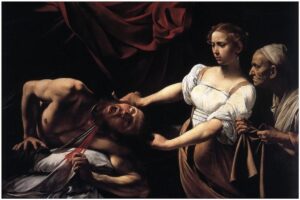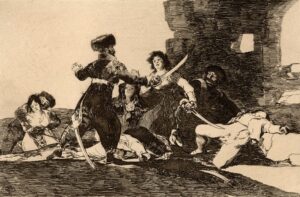Art therapy: Healing the mind through creative expression
When we talk about art, we like the aesthetics when we interact with art, whether it be a piece of music, art, or painting. Rather than serving any practical function, this joy stems from our admiration of the artwork’s inherent features. This delight is facilitated by the sensory experience, emotional resonance, and visual appeal. Art itself has the ability to arouse feelings. A striking abstract artwork may arouse interest or excitement, whereas a lovely landscape picture may inspire calm sentiments. These feelings are pleasurable and contribute to our general well-being. We examine composition, symbolism, colours, and shapes. Our brains are stimulated by this mental activity, which adds to the enjoyment we get from the encounter. Now if we talk about the psychology of art itself is the study of how our sensory experience of beautiful objects affects our cognitive and affective processes is the focus of the intriguing topic of “art psychology.” Our minds perform complex reactions when we look at a painting, hear music, or interact with a sculpture.

Throughout history, psychological reasons impacted artists of the 20th century such as Wassily Kandinsky, Paul Klee, and Naum Gabo. At that time, because of Theodor Lipps’s work, the idea of “empathy” became essential to art psychology. Psychology is related to our feelings and our deepest feelings can be profoundly expressed through the medium of art. Through a variety of artistic mediums, painting, we can express emotions that are frequently difficult to put into words. The act of painting is a therapeutic that transports individuals to a state of focus and concentration. Stress can sometimes get worse when we don’t take care of ourselves. Making art is a method to decompress and rest. We may practice mindfulness, which lowers tension and anxiety, as we move the brush, mix colours, and make rhythmic strokes over the canvas.We reach a level of mindful engagement when we produce art, whether it be painting, drawing, or something else entirely. Being mindful entails concentrating on the current work without passing judgment and being present in the moment. Our focus is diverted from worries and outside distractions as we paint or blend colours.Making art offers a way to shut out the incessant noise in our heads. We focus our energies on the creative process rather than dwelling on issues or fears. Painting with a brush repeatedly or carefully selecting colours can become a kind of meditation.We can communicate feelings through painting that may be hard to say out loud. Whether it’s happiness, despair, or annoyance, the canvas ends up reflecting our deepest selves. Our emotional vocabulary is formed by the colours and brushstrokes.A sense of independence is given by art. We choose what to make, how to express ourselves, and how long to work on a project. Art becomes a place where we wield the brush and create our own story in a world where many things in life are out of our control.

In contrast, some people often like negative art, which is more commonly known as macabreart. The fascination with gruesome and scary art has intrigued both the artists and audiences for centuries. Fear and horror can serve as a form of catharsis which people enjoy. It’s like riding a roller coaster, the adrenaline rush and fear are real, but we know we’re ultimately safe which is both thrilling and satisfying. We are forced to confront our own mortality by macabre art. The representation of death, decay, and the paranormal serves as a reminder of our frailty and the unavoidable end of life. It takes on the form of a reflective mirror that reflects our existential anxieties and worries. The borders between beauty and terror are blurred in macabre art. It contradicts the traditional ideas we have about beauty. It makes us reevaluate what we consider to be acceptable or lovely. The very fact that the bizarre and unsettling violate expectations can lend them an odd charm. The macabre explores the more sinister facets of human psychology. Artists are able to investigate their worries, fears, and the unknown. Through interacting with these topics, audiences face the mysteries and inner demons within themselves.
Certain ghastly works of art are potent social critiques. It was utilized by artists such as Francisco Goya to reveal the atrocities of oppression and war. This heritage is carried forward by contemporary artists, who tackle gender, sexuality, and bodily issues in provocative and unsettling ways. On the other hand, horrific art has an odd beauty.

A eerie charm is produced by the contrast of beauty and gloom. It’s like looking into the darkness, part of what makes it so appealing is the unease mixed with intrigue. Macabre art challenges us to face our fears, venture into the forbidden, and discover beauty in the unsettling. Regardless of how uncomfortable or thought-provoking it is, it still appeals to our most basic curiosity and impulses.
Nonetheless, modern paintings are still relevant in today’s world because they capture our shared struggles, experiences, and artistic expressions. Nonetheless, through bridging tradition and innovation and encouraging viewers to connect with the constantly changing environment through creative expression, art represents the complexity of our time.
References
- https://mymodernmet.com/what-is-contemporary-art-definition/
- https://artincontext.org/what-is-contemporary-art/
- https://en.wikipedia.org/wiki/Contemporary_art
- https://www.metmuseum.org/about-the-met/collection-areas/modern-and-contemporary-art
- https://www.oxfordbibliographies.com/abstract/document/obo-9780199828340/obo-9780199828340-0002.xml
- https://bing.com/search?q=psychology+of+art
- https://www.psychologytoday.com/us/blog/creativity-the-art-and-science/202303/your-brain-on-art
- https://en.wikipedia.org/wiki/Psychology_of_art
- https://theconversation.com/why-do-we-make-violent-art-and-what-does-it-say-about-the-artist-211830
- https://www.creativebloq.com/digital-art/artists-changing-face-horror-101517417
- https://artfilemagazine.com/famous-scary-paintings/
- https://www.salon.com/2021/10/24/the-psychology-of-gore-why-do-we-like-graphic-blood-and-guts-in-our-entertainment/
- https://www.creativebloq.com/digital-art/artists-changing-face-horror-101517417
- https://thedopeart.com/blogs/macabre-art-and-style/exploring-the-beauty-of-darkness-an-introduction-to-dark-macabre-art